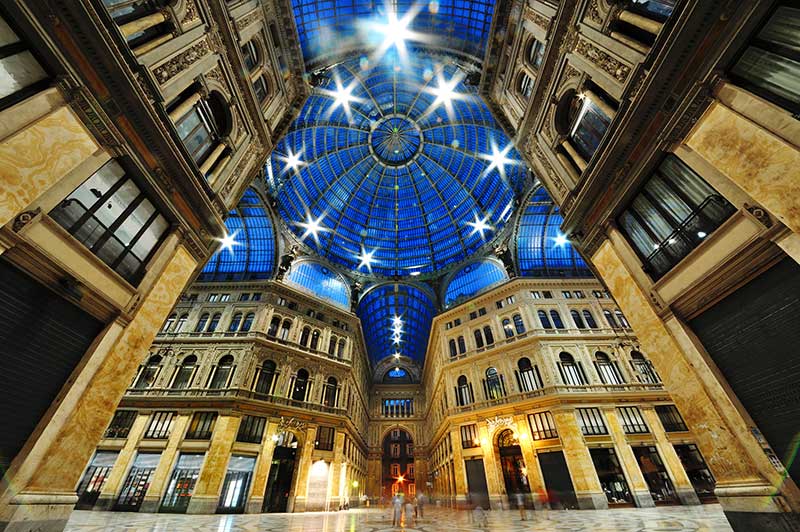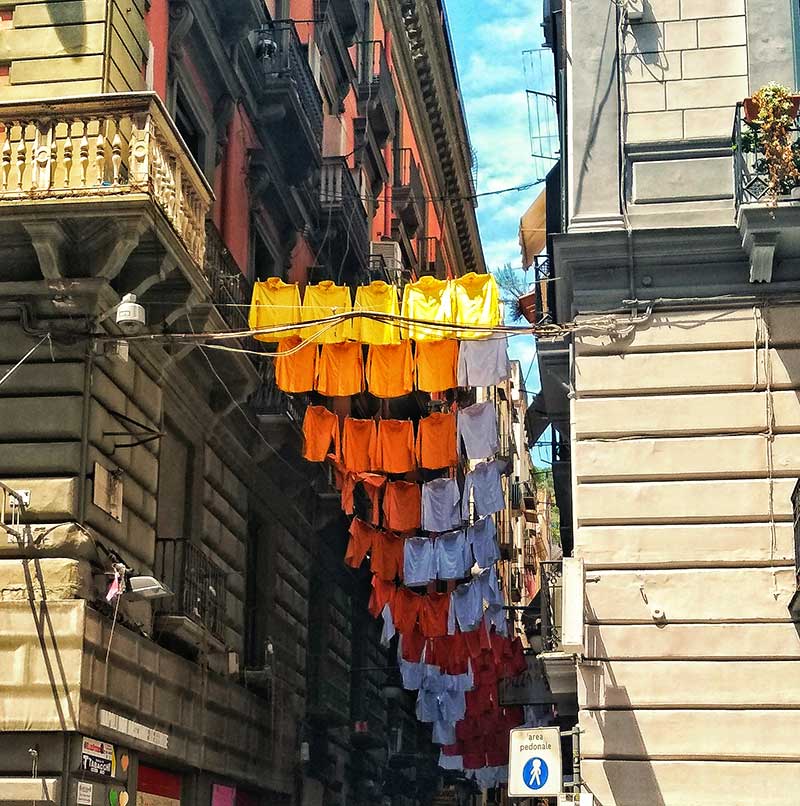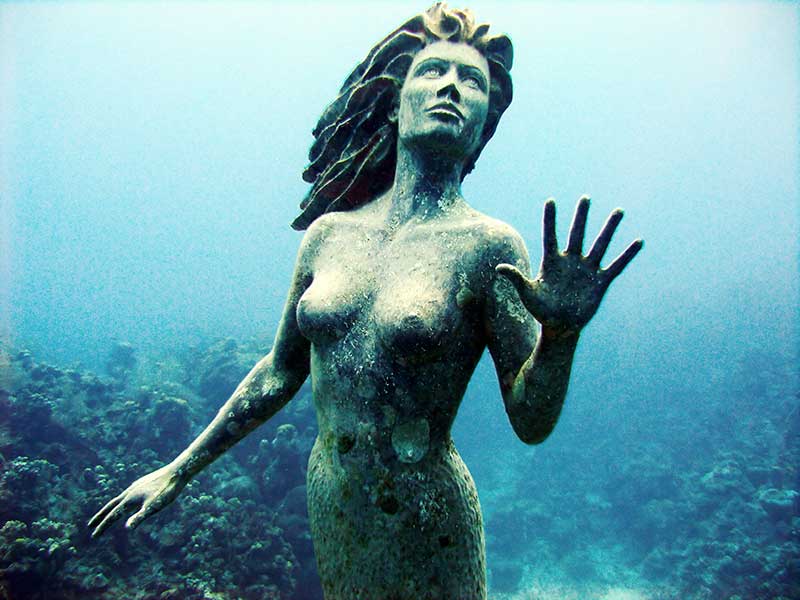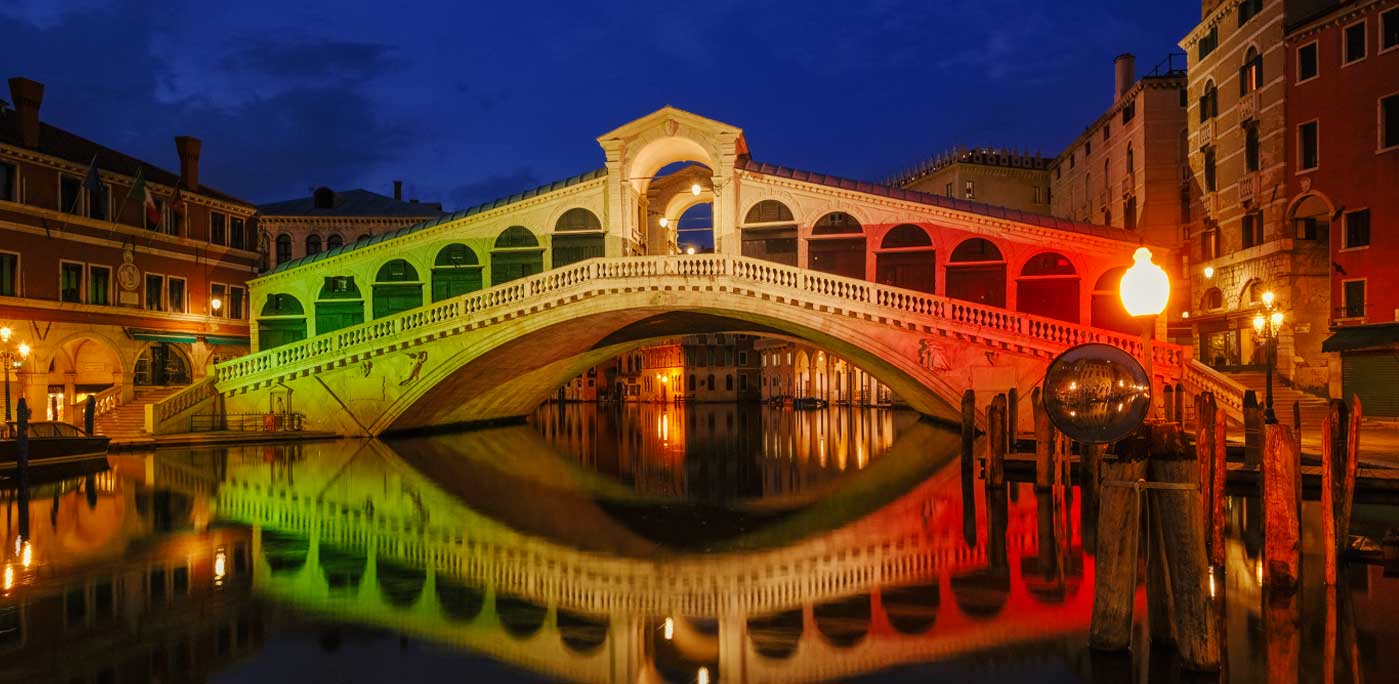Vedi Napoli e poi mori, once you’ve seen Naples, you are free to die. It may sound unsettling at first, but whoever visited the city can testify it is so special, so unique and so precious it could well represent the climax of one’s life, at least when it comes to beauty.
Naples, with its noise that becomes music, its crumbling buildings and majestic castles, its baroque churches and popular markets, is anything and everything, it’s love and hate, it’s elegance and crassness, it’s wealth and poverty, it’s spice and sugar, history and modernity, sacred and profane.

You may try to judge it, but you can’t help loving it, in the end, because it’s Italy, in all its idiosyncrasies (© Dreamstime)
It’s Naples. You may try to judge it, but you can’t help loving it, in the end, because it’s Italy, in all its idiosyncrasies.
Naples is a city of many mysteries and legends. Its people do have a special relationship with fortune telling, with speaking with the dead and know a thing or two about malocchio, we all know that. But the most mysterious and legendary of all things from Naples is, probably, the myth surrounding its own foundation.

Mermaids are mysterious enough on their own, you may say, but this one, this Parthenope, has something more than the others: she was the literary child of one of history’s most elusive authors, Homer, who described her in the 12th Canto of the Odissey (© Dreamstime)
Parthenope the mermaid
If you speak Italian, you may know we often refer to Neapolitans as partenopei and that all things Neapolitan are known as partenopee. Well, that’s because legend says it was Parthenope, a mythical mermaid, that founded Naples. Mermaids are mysterious enough on their own, you may say, but this one, this Parthenope, has something more than the others: she was the literary child of one of history’s most elusive authors, Homer, who described her in the 12th Canto of the Odissey. Good old Homer, the poet some believe never existed, a mythical figure in itself, really, voice for a netherworld of creatures and beings he may as well be part of.
Parthenope, then, we were saying… her name means “virgin” in ancient Greek and she was one of the beautiful mermaids living in the Mediterranean. She – and all mermaids as a matter of fact – was known for her melodious voice, which she used to attract sailors and travelers only to kill them once they were in her reach. A man like Ulysses, devoted to knowledge and led by the strongest curiosity, wanted to hear Parthenope sing but, as he also wanted to go back home to his wife and son (and it had been taking quite a long time, already), he wasn’t too keen on the idea of getting butchered. So, he asked his crew to tie him to the mainmast and not to set him free, even if he begged for it, during Parthenope’s song. And that’s how Ulysses heard the eerily beautiful voice of a mermaid and survived. But Parthenope didn’t take it well and, distraught by the event, she jumped off the highest cliff and died.

Naples keeps charming visitors with its 2000 years of history (© Dreamstime)
…And the sea lulled her body in owe and mourning, until it reached the Gulf of Naples. When the waves touched the isolotto di Megaride, they finally laid it to rest. And here, the mortal remains of Parthenope dissolved, creating the city of Naples, her head gently touching the hill of Capodimonte and her tail that of Posillipo. This is why Naples is called the city of Parthenope and is, still today, a place of immense beauty but sometimes a bit controversial.

Naples is a city of many mysteries and legends (© Dreamstime)
Parthenope, a girl in love
Homer’s version is not, however, the only one telling us about Parthenope and Naples. In the early 20th century, Neapolitan writer Matilde Serao created her own. Parthenope was a Greek girl, desperately in love with Athenian hero Cimon. But Parthenope had been already promised in marriage to another man, so she and Cimon escaped Greece and reached –you guessed it—the Gulf of Naples. Here they settled and started their life together: Parthenope gave birth to 12 children and became the mother of all Neapolitans. According to Serao, Parthenope never died: she lives forever and stands protective beside her children and the city they populate, Naples.
[/caption]
Parthenope and Vesuvius
There is a third, mythical version of the foundation of Naples, one introducing to the picture another icon of the city, Mount Vesuvius. Just we’re not talking about the volcano, but about a centaur called so. This version of the myth, that became popular in the 19th century, says mermaid Parthenope, one day, met by chance a centaur, Vesuvius. The two immediately fell in love, also thanks to the intervention of Eros, the god of Love, who pierced their hearts with his magical arrows. The two shared many moments of happiness, until Zeus, the King of all gods, found out. You see, the old moody god, known for being a serial womanizer, wanted Parthenope for himself, so he got rid of his rival Vesuvius turning him into … a volcano. Yes, a volcano standing over the Gulf of Naples so that Parthenope could keep on seeing him, but could no longer touch him. Distraught by sorrow and pain, Parthenope killed herself by jumping into the sea. Just like Homer wrote, the waves brought her body on the shores of the isolotto di Megaride, where it disappeared to become the city of Naples.

The legend of the siren Partenope explains the origin of the beautiful Naples (© Dreamstime)
Parthenope: a mermaid unable to accept defeat, who expiates in death her sins and becomes a beautiful city; a girl in love who turns into the mother of all Neapolitans; a mermaid again, who manages to reunite with her beloved after death, as the city lying at the feet of the mountain he had become.
The three faces of Parthenope, the three legends behind the origins of Naples.






























